Text Davide Fioraso
Photos Alice Russolo
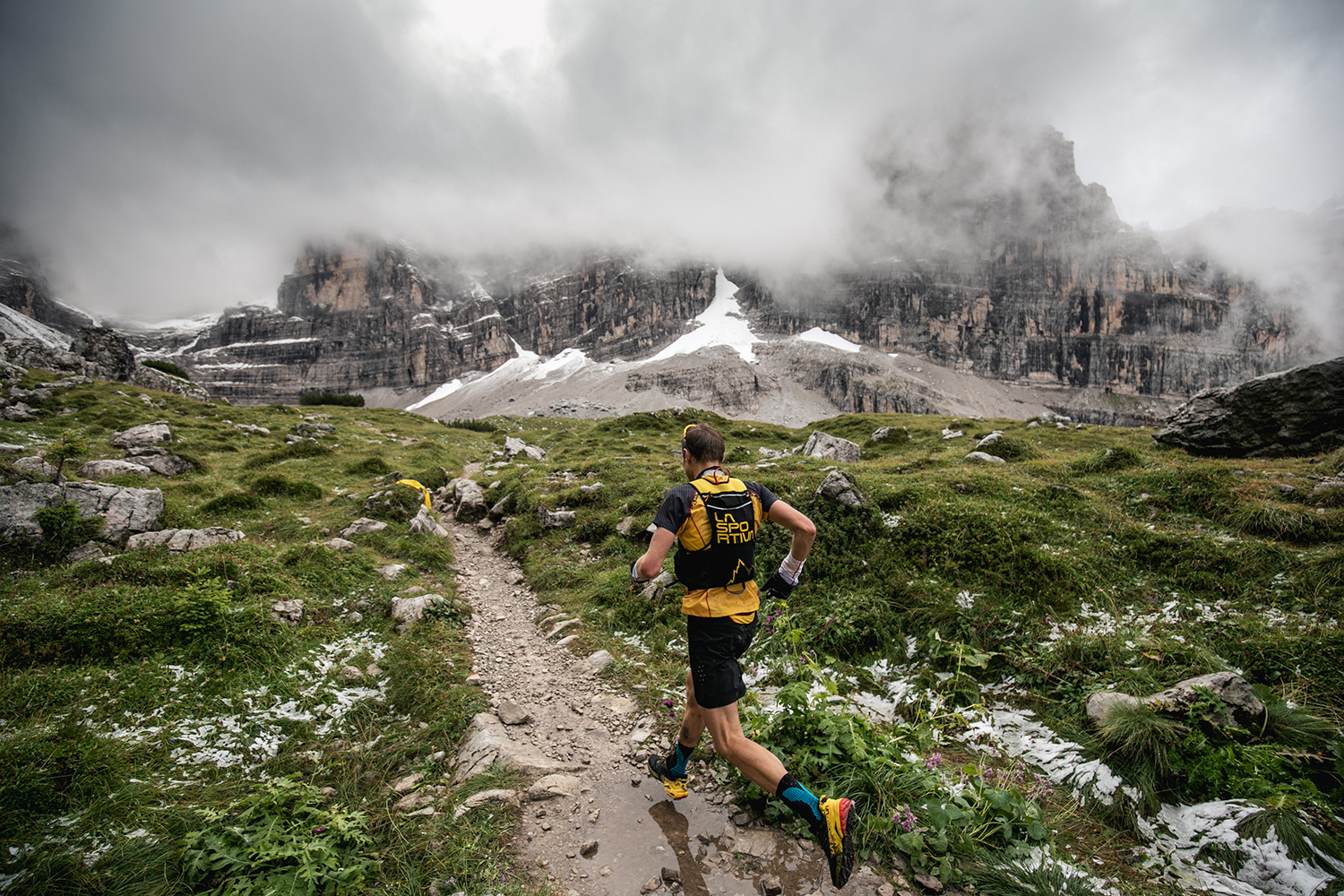
Text Davide Fioraso
Photos Alice Russolo
“On a Saturday of September, looting the pantry of the hotel, my companion filled our backpacks with food, paid me the bus ride and we reached Molveno. Six hours on foot to go up to the shelter, a restless night, a very early wake up call and off to the Sentiero delle Bocchette. Suddenly, turning the edge of the Brenta Alta, the Basso appeared in front of me. Everything was in shadow with the top lit by the first sun. It stood before us, vertical, overhanging, looming, gloomy and at the same time inviting.”
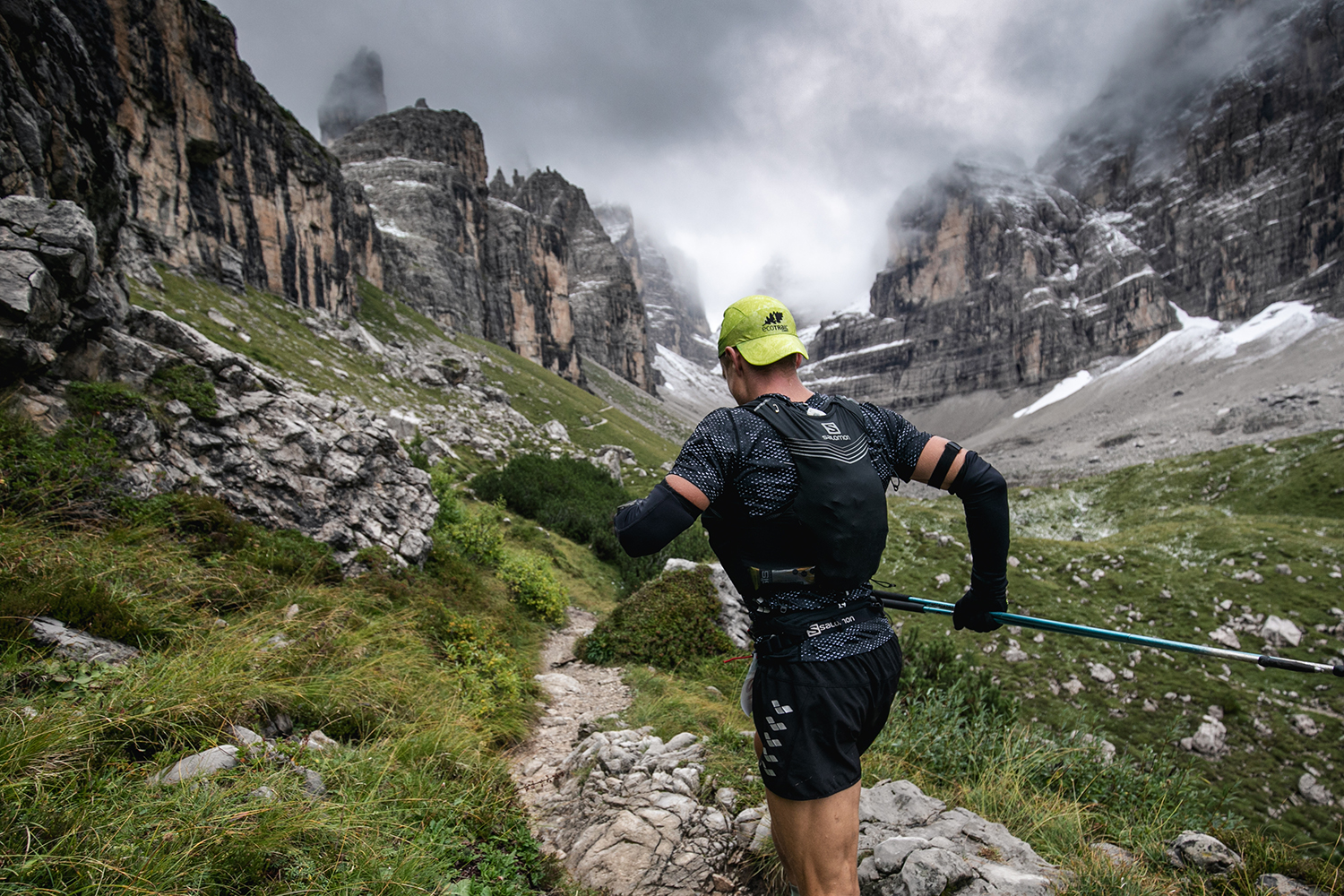
Some months ago, among my summer readings, I was finishing “E se la vita continua” by Cesare Maestri, The Spider of the Dolomites, a discussed and troubled character, protagonist of heated debates in the mountaineering world. A name inextricably linked to the walls of Brenta. From the famous Campanile Basso, to the magnificent Cima d’Ambiez, to the mighty Crozzon. Getting the invitation to run this race was an unexpected coincidence and I could not refuse. Behind me I had a summer training program, obviously disregarded, and a very long absent from this world. But in my heart there were so much relax, so much desire to let go and live this experience with the purpose of telling it, as had happened in the Orobie. The premises, in addition to these, were more than flattering comments: “one of the most beautiful and best organized competitions I have ever taken part in”, “in the middle of the Brenta Dolomites you feel like you’re on another planet”.
I arrived in Molveno on a Saturday by car and I didn’t have to loot any hotel pantry. In my eyes the whole scenery of these mountains flowed. Unless I found myself staring at something very different from what I had imagined.
“We left Molveno in the middle of the night, everyone had a backpack that weighed thirty to forty kilos […]. Every hour and a half of walking we gave ourselves a ten-minute rest. The first one was in the middle of the Val delle Seghe, the second at the Rifugio Selvata, the third at the Baito dei Massodi and the fourth near the Pedrotti. My favorite stop was the Selvata one because Cesira had three daughters, one of them with very nice boobs.”
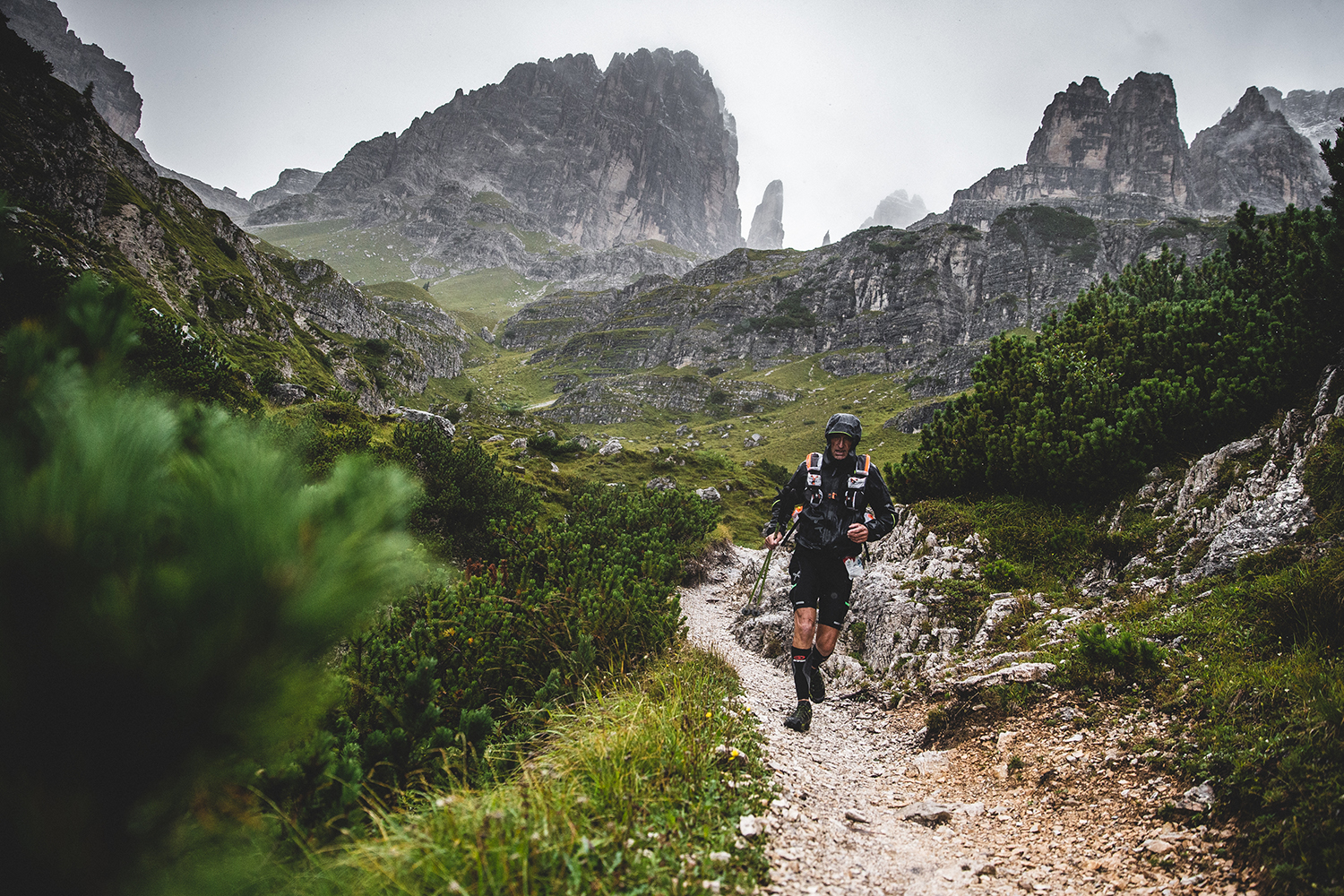
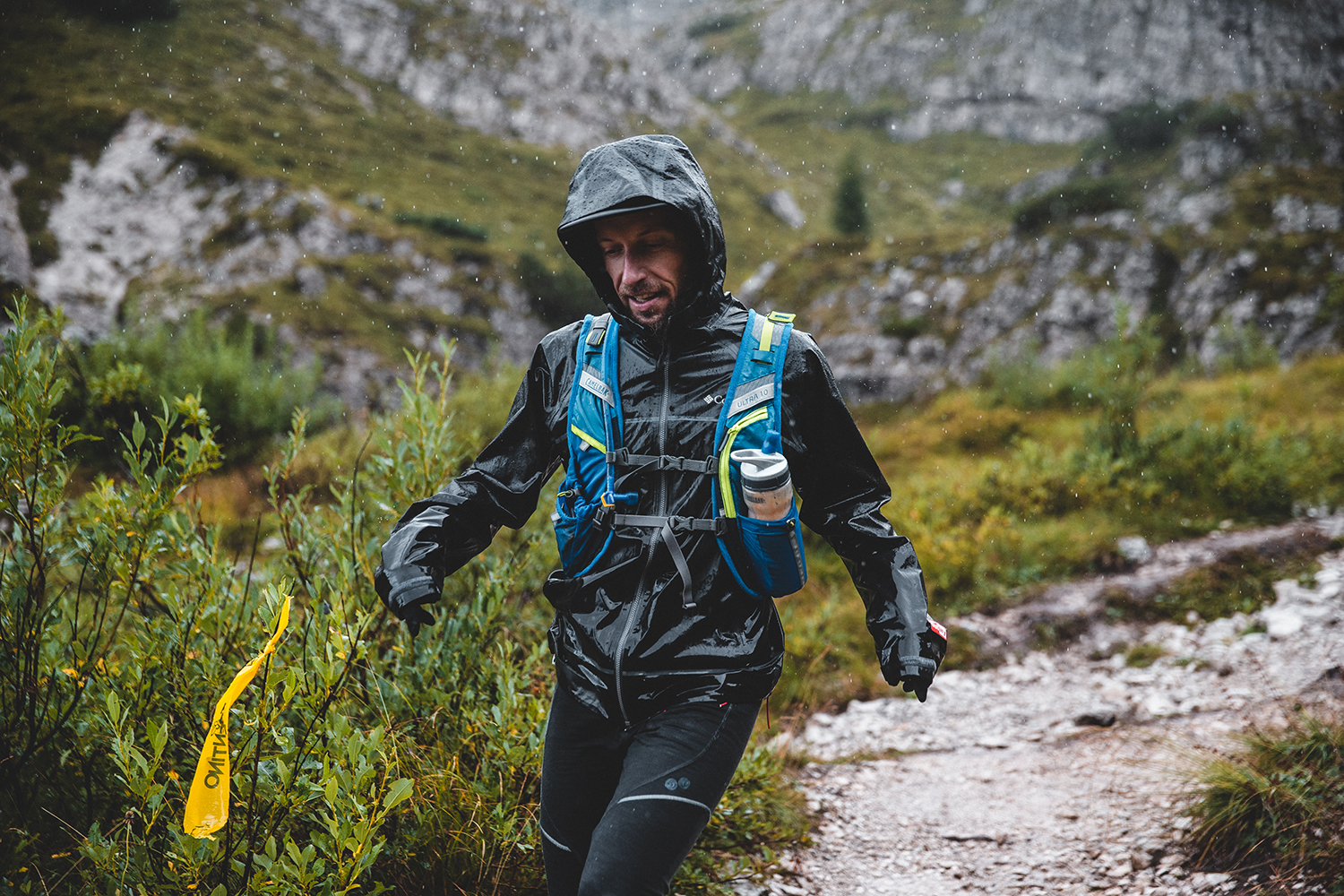
I enjoyed the run from the first to the last km (well, I didn’t enjoyed the last one that much), which I managed with parsimony. In the first 20 km, the 2000 meters in altitude are smooth and regular. A beautiful single track, the one on the 301 trail, which anticipates the plateau of Malga Spora, and then rises steadily towards the Gaiarda Pass, lashed by cold wind and fine rain. From here you go up on pleasant ups and downs up to the 2442 meters of Passo Grosté. Then the Graffer refuge is behind you and the real show begins. For the legs, for the mind, for the eyes. I reluctantly left the Tuckett, the Route of Fridolin guides us through a sea of rock up to the broad ledges and the screes that date back to the Val Brenta Alta. Dal Brentei is like opening a door to the unknown, towards the snowy slopes of the Bocca di Brenta. Tosa Pedrotti is a sigh of relief. A glass of hot tea and a long descent towards the valley, with a smile on your face, trying to recover some position in the race that you left behind in the previous digressions. From Pradel onwards are the last kilometers, an outline that never seems to end. Piazza S.Carlo is the walkway on Molveno, the lakefront its point of arrival.
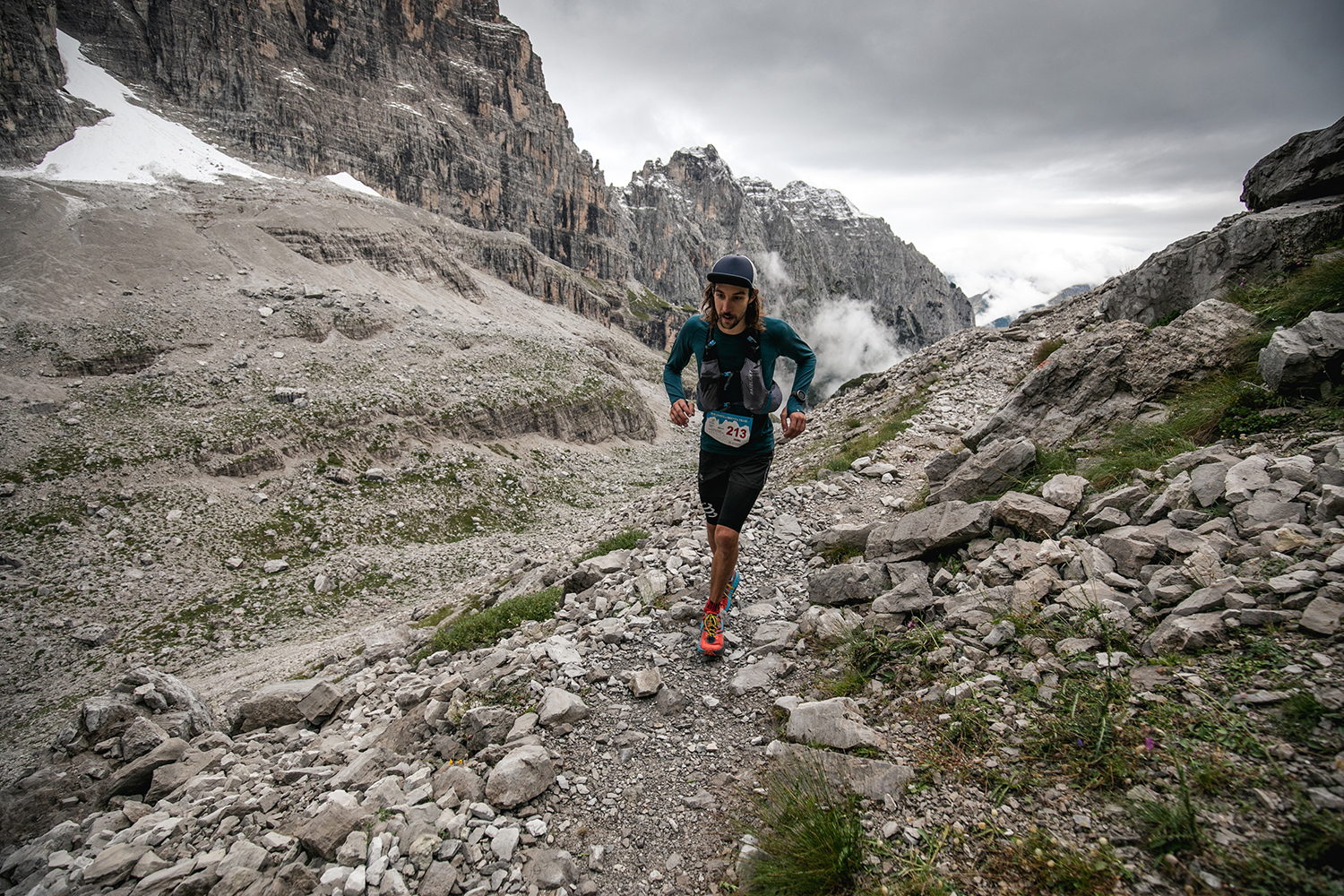
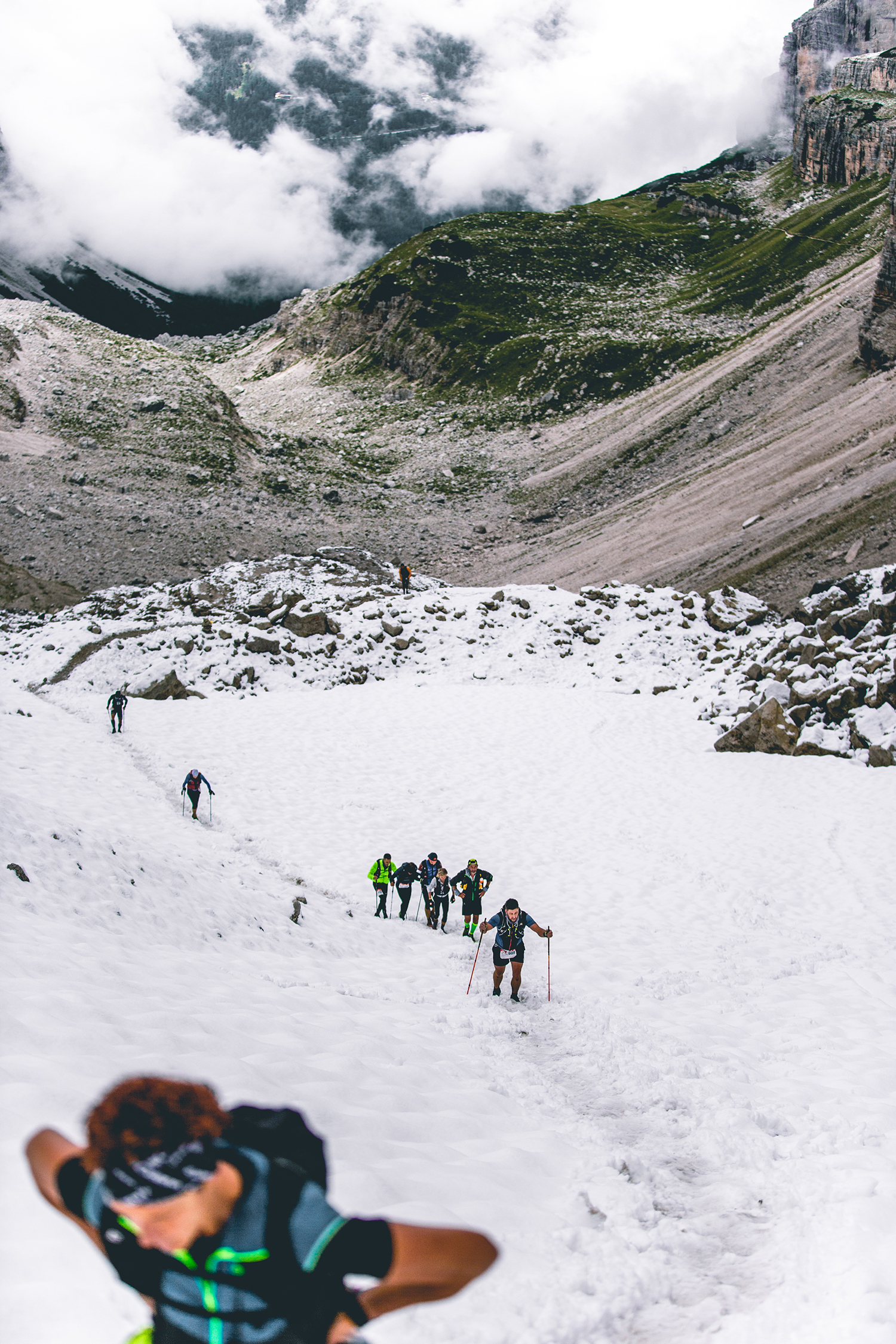
“At the Brentei Refuge, on the day of the convocation, in addition to Bruno Tessasi and Pisoni, all the gotha of the Alpine Club was present. They were all there with their noses in the air, armed with binoculars, because they had known that I would climb down from the Crozzon di Brenta […]. At 10 o’clock I leaned out of the wall and began to descend, climbing along that vertical wall that I had traveled uphill just a year before. For the first time in the history of mountaineering a man went down a sixth grade route on his own.”
Now, with a cool head, I retrace the steps and focus my memories on the people I had next, with whom I exchanged a few chats, shared some overtaking, built fantasies. I meditate on anecdotes, questions and considerations. On the fact that dining with chestnut flour the night before was not part of the “great ideas”. About the reason why Holland and Vicenza were the most represented places (to pay homage to the latter they even transferred part of the Galleria del Pasubio after the Croz dell’Altissimo). About why over 50s locals don’t look anyone in the face, even flaunting a bit of arrogance. About how that guy I met with two phone calls between Tuckett and Brentei managed to arrange the next holiday destination with his wife and children, call the travel agency and send a transfer for the deposit. Or about the fact that knowing the manager of a shelter inevitably leads to a refreshment based on a pint of beer. In all of this, only one certainty: the central section between the Graffer and the Brentei is something that everyone should see at least once in a lifetime.
I won’t deny it, I love races where you can run, those to be accomplished without too many nervous tears, without an electrocardiogram altitude profile. Alternatively, I prefer those immersed in a landscape that is so fascinating that I know how to divert my mind elsewhere, as Alessandro Locatelli’s words tell us: “I need to be present in a place where I feel tiny and useless, where my problems are ridiculous and where I can lose myself for hours without feeling time passing by”. I adore and loved the Brenta Dolomites for this. The technical background, the breathtaking views, the bare rock, a curve that rises steadily in a single solution. I love and loved my muffled, mystical atmosphere even more. Low clouds, light rain, September snow. For the first time in my life I started the GPS and hid the clock inside the backpack. I didn’t want to know distances and differences in height. Just enjoy the journey without distractions. This time, the DBT won a podium place in my personal ranking.